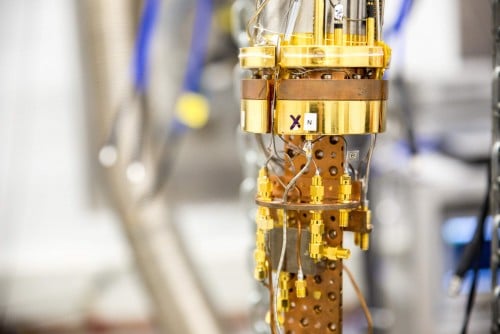Science
Time Crystals Revolutionize Quantum Computing Potential

Researchers at Aalto University have made a significant breakthrough in quantum technology by successfully connecting a time crystal to an external system for the first time. This innovation could lead to enhanced capabilities in quantum computing and sensing, providing a pathway to more powerful technologies. The study, led by Academy Research Fellow Jere Mäkinen, was published in Nature Communications on October 16, 2023.
Time crystals, a concept first proposed by Frank Wilczek, are defined as quantum systems that can maintain a state of perpetual motion without external energy input. They were experimentally verified in 2016 and are characterized by their lowest energy state, which can repeat movements over time. The recent study marks a pivotal step in understanding how these systems can interact with their environment.
In their experiments, the team transformed a time crystal into an optomechanical system, utilizing radio waves to introduce magnons into a Helium-3 superfluid cooled to near absolute zero. Magnons are quasiparticles that behave as if they were individual particles, and their interaction with the time crystal led to unprecedented results. When the radio wave pump was turned off, the magnons formed a time crystal that remained in motion for up to 10^8 cycles, or several minutes, before fading to an undetectable level.
Mäkinen explained, “We showed that changes in the time crystal’s frequency are completely analogous to optomechanical phenomena widely known in physics. These are the same phenomena that are used, for example, in detecting gravitational waves at the Laser Interferometer Gravitational-Wave Observatory in the U.S.”
This discovery could potentially revolutionize quantum computing, as time crystals have a significantly longer lifespan compared to traditional quantum systems. According to Mäkinen, “The best-case scenario is that time crystals could power the memory systems of quantum computers to significantly improve them. They could also be used as frequency combs in extremely high-sensitivity measurement devices.”
The research was conducted at the Low Temperature Laboratory within the OtaNano research infrastructure, which specializes in nano-, micro-, and quantum technologies. The findings not only enhance the understanding of time crystals but also open new avenues for their application in advanced technological fields.
As the field of quantum computing continues to evolve, the integration of time crystals could mark a transformative era, enabling the development of faster, more efficient, and highly sensitive quantum systems. The implications of such advancements could extend beyond computing, potentially impacting various sectors reliant on precise measurements and data processing.
-

 Science3 weeks ago
Science3 weeks agoALMA Discovers Companion Orbiting Giant Red Star π 1 Gruis
-

 Top Stories2 months ago
Top Stories2 months agoNew ‘Star Trek: Voyager’ Game Demo Released, Players Test Limits
-

 Politics2 months ago
Politics2 months agoSEVENTEEN’s Mingyu Faces Backlash Over Alcohol Incident at Concert
-

 World2 months ago
World2 months agoGlobal Air Forces Ranked by Annual Defense Budgets in 2025
-

 World2 months ago
World2 months agoElectrification Challenges Demand Advanced Multiphysics Modeling
-

 World2 months ago
World2 months agoMass Production of F-35 Fighter Jet Drives Down Costs
-

 Business2 months ago
Business2 months agoGold Investment Surge: Top Mutual Funds and ETF Alternatives
-

 Top Stories2 months ago
Top Stories2 months agoDirecTV to Launch AI-Driven Ads with User Likenesses in 2026
-

 Entertainment2 months ago
Entertainment2 months agoFreeport Art Gallery Transforms Waste into Creative Masterpieces
-

 Business2 months ago
Business2 months agoUS Government Denies Coal Lease Bid, Impacting Industry Revival Efforts
-

 Lifestyle2 months ago
Lifestyle2 months agoDiscover Reese Witherspoon’s Chic Dining Room Style for Under $25
-

 Health2 months ago
Health2 months agoGavin Newsom Critiques Trump’s Health and National Guard Plans










